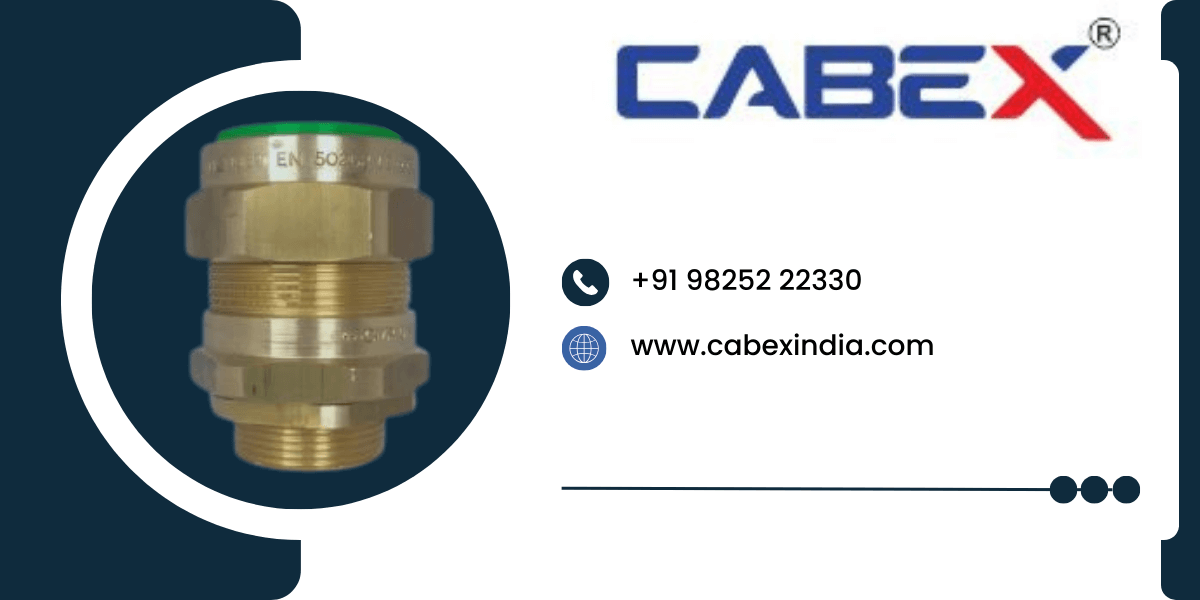In the labyrinth of industrial applications where safety and functionality converge, the Atex cable gland emerges as a critical component, often overlooked yet indispensable. This comprehensive guide delves into the intricacies of Atex cable glands, unravelling their significance, applications, and the nuanced considerations that demand attention.
Unveiling Atex Cable Glands: A Primer
What is an Atex Cable Gland?
At the nexus of electrical engineering and hazardous environments lies the Atex cable gland. Designed to mitigate the risks associated with explosive atmospheres, these glands serve as the gateway for cables to enter equipment while preventing the ingress of potentially hazardous substances.
The ATEX Directive: A Regulatory Framework
To comprehend the essence of Atex cable glands, one must grasp the regulatory framework that birthed them. The ATEX directive, derived from “ATmosphères EXplosibles,” delineates the standards and requirements for equipment intended for use in explosive atmospheres. This directive lays the foundation for the meticulous design and engineering of Atex cable glands, ensuring compliance with stringent safety norms.
Anatomy of Atex Cable Glands
Constructive Components
1. Cable Seal
At the heart of an Atex cable gland lies the cable seal—a resilient interface that encapsulates the cable, preventing the infiltration of hazardous substances. The choice of materials for the cable seal is pivotal, considering factors like chemical resistance, temperature fluctuations, and mechanical stress.
2. Gland Body
Crafted with precision, the gland body serves as the structural backbone, housing the cable and anchoring it securely. The material composition of the gland body plays a pivotal role in determining its resistance to corrosion and mechanical integrity.
3. Clamping Mechanism
Akin to a sentinel, the clamping mechanism ensures a steadfast grip on the cable, thwarting any unintended movements or vibrations. This component is engineered to withstand the rigours of dynamic industrial environments, where stability is paramount.
4. Armour Clamp
In applications demanding heightened robustness, an armour clamp reinforces the cable’s integrity. This additional layer of protection shields the cable from external forces, maintaining its structural integrity under duress.
Material Selection: The Crucial Cog
The efficacy of an Atex cable gland hinges on the judicious selection of materials. From brass to stainless steel, each material imparts unique characteristics, influencing the gland’s resistance to corrosion, temperature tolerance, and mechanical strength.
Decoding Atex Classifications
Zone 0, Zone 1, and Zone 2: Understanding the Terrain
In hazardous environments, the delineation of zones is imperative, and Atex cable glands are no exception. Atex cable glands are classified based on the zones they are intended for, with Zone 0 being the most volatile and Zone 2 relatively less hazardous.
Zone 0
In Zone 0, where the presence of explosive atmospheres is constant, Atex cable glands must embody an unparalleled level of integrity. These glands are designed to operate flawlessly in the most challenging conditions, where the slightest compromise can have catastrophic consequences.
Zone 1
Zone 1, characterized by intermittent explosive atmospheres, demands cable glands that seamlessly balance durability with precision. The transitional nature of Zone 1 necessitates glands capable of swift adaptation to varying environmental conditions.
Zone 2
At the fringes of hazardous environments, Zone 2 requires cable glands that provide a robust yet flexible barrier. These glands must be adept at mitigating risks while accommodating the intermittent nature of potentially explosive atmospheres.
Navigating the Atex Selection Dilemma
Parameters for Prudent Selection
1. Cable Type and Diameter
The diversity of cables traversing industrial landscapes demands a nuanced approach to cable gland selection. Different cables, varying in diameter and composition, necessitate bespoke Atex cable glands tailored to their unique specifications.
2. Environmental Considerations
From corrosive chemicals to extreme temperatures, the environment in which Atex cable glands operate is relentless. A meticulous assessment of environmental factors is imperative to ascertain the gland’s resilience against the forces it will encounter.
3. Installation Challenges
Installing an Atex cable gland is a precision task, and understanding the intricacies of installation challenges is pivotal. Factors such as accessibility, space constraints, and the need for expedited installations all contribute to the selection process.
Case Studies: Real-world Applications
Oil and Gas Industry
In the unforgiving terrains of the oil and gas industry, Atex cable glands emerge as unsung heroes. Safeguarding critical electrical connections against the backdrop of explosive atmospheres, these glands play a pivotal role in sustaining operations and averting potential disasters.
Chemical Processing Plants
Chemical processing plants, rife with corrosive substances and volatile atmospheres, demand Atex cable glands with an unwavering commitment to chemical resistance. The symbiosis between material selection and stringent engineering in these glands ensures the seamless functioning of electrical systems.
Mining Sector
In the depths of mines, where dust and explosive gases coalesce, Atex cable glands stand as stalwarts of safety. Their robust design and adherence to Atex standards make them indispensable in an environment where precision and reliability are non-negotiable.
Future Frontiers: Innovations in Atex Cable Glands
IoT Integration
The advent of the Internet of Things (IoT) has permeated industrial landscapes, and Atex cable glands are not immune to this transformative wave. Integrating smart sensors into cable glands enhances predictive maintenance, providing real-time insights into the gland’s health and performance.
Nanotechnology in Material Science
The relentless pursuit of enhanced performance has ushered in nanotechnology into the realm of Atex cable glands. Nano-coatings on gland components offer unparalleled resistance to corrosion and abrasion, elevating the longevity and reliability of these critical components.
Ensuring Compliance: Testing and Certification
The litmus test for any Atex cable gland lies in its ability to meet and exceed safety standards. Rigorous testing procedures, often involving simulated hazardous conditions, ascertain the gland’s resilience and efficacy. Certification from authorised bodies serves as a testament to the gland’s adherence to safety norms.
The Imperative of Regular Maintenance
In the relentless march of industrial operations, the significance of regular maintenance often takes a backseat. However, with Atex cable glands, proactive maintenance is not a choice but a necessity. Periodic inspections, lubrication of moving parts, and swift replacement of worn components are integral to sustaining the glands’ reliability.
Conclusion: The Unseen Guardians
As we traverse the landscape of industrial safety, the Atex cable gland emerges as an unsung hero, silently fortifying electrical connections in the face of potential cataclysms. From the intricacies of material science to the dynamic classifications based on hazardous zones, this guide unravels the layers that veil the profound significance of Atex cable glands.
In an era where industrial landscapes evolve at a breakneck pace, embracing innovation and stringent safety standards is not a choice but an imperative. The Atex cable gland, with its unwavering commitment to safety and functionality, epitomises the symbiosis between engineering precision and regulatory compliance. As we navigate the complexities of hazardous environments, let the Atex cable gland stand as a beacon—a testament to the indomitable spirit of human ingenuity in the pursuit of safety and reliability.
You May Also Like:




